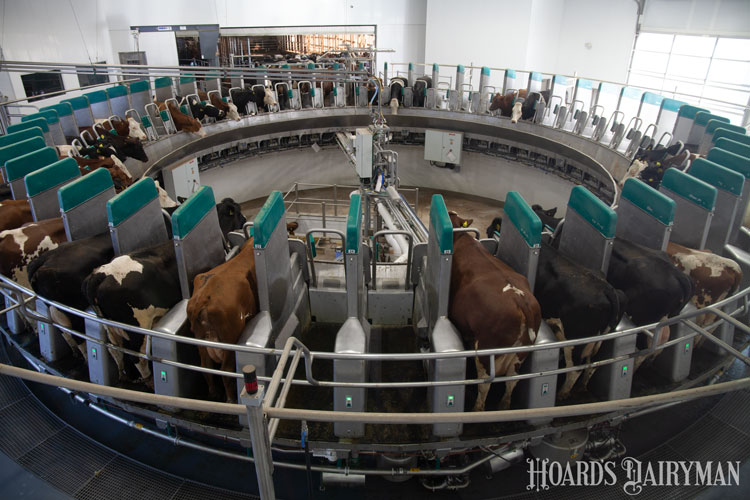
Harvesting milk must be done safely, effectively, and efficiently to ensure a good experience for the cows as well as the people working with them. Accomplishing all of this requires thoughtful animal handling before and while cows are in a parlor, reminded Carolina Pinzón during a Badger Dairy Insights webinar.
“Once an animal experiences a negative experience like fear or pain, it will take 20 to 30 minutes to calm a cow down,” said the University of Wisconsin-Madison Division of Extension dairy outreach specialist. When adrenaline instead of oxytocin is coursing through the animal’s bloodstream, milk letdown is delayed, which leads to units being on longer and high vacuum levels that can damage teats. It also means it takes longer for cows to move through the parlor, impacting cow and employee schedules.
In short, what happens in the animals’ pens and the holding area matters to milking parlor success, Pinzón implored.
Calm and uncrowded
To help prepare cows to be milked, she urged that cow pushers must be calm when moving animals out of their pen toward the parlor. Walk, use their natural instincts to move them, and avoid making loud noises.
Also, have good flooring and lighting that doesn’t frighten cows as they move through alleys. Cows will be hesitant to walk on slippery surfaces, so putting down gripping material is helpful if floors are icy or dirty. Avoid rushing cows through shadows or bright light beams that may cause them to spook.
One of the biggest mistakes for cow and employee safety as well as limiting adrenaline release is putting too many cows in the holding area, Pinzón said. She noted the Dairyland Initiative recommends sizing the holding area to 125% of the largest group and providing about 20 square feet per cow. Parallel grooving or rubber flooring makes a difference for cow comfort and safety, and Pinzón advised no more than a 2% floor slope.
Remember that none of a cow’s daily activities can be done in the holding area — there is no food, water, or resting space. They are standing for an extended period, perhaps on concrete. Minimizing a cow’s time there has widespread benefits, Pinzón said.
When cows are waiting in the holding area, the crowd or mobile gate should be moved a short distance at a time and often, she continued. It is meant to gently guide cows and reduce empty space in the holding area, not aggressively push cows forward.
As another benefit, Pinzón also noted that all of this behavior teaches cows not to fear the parlor and encourages them to come in to be milked on their own. On the other hand, having employees go into the holding area for each new group teaches cows to wait to be fetched, she pointed out.
When cows are in the parlor, a complete, stimulating, and timely milking procedure continues the promotion of effective milk flow and therefore healthy teats. Remember that 80% of a cow’s milk is in the alveolar glands and requires stimulation. Only the first 20% is already in the teat cisterns. A good goal is to have less than 5% of the herd experience delayed milk ejection, also known as bimodal letdown, Pinzón said.
Training employees on easy handling, the proper use of a crowd gate, and complete milking procedures can make a big difference in how your milking parlor operates, she concluded. It will allow you to harvest more milk from your cows in a way that keeps them and employees safer and more effective.








